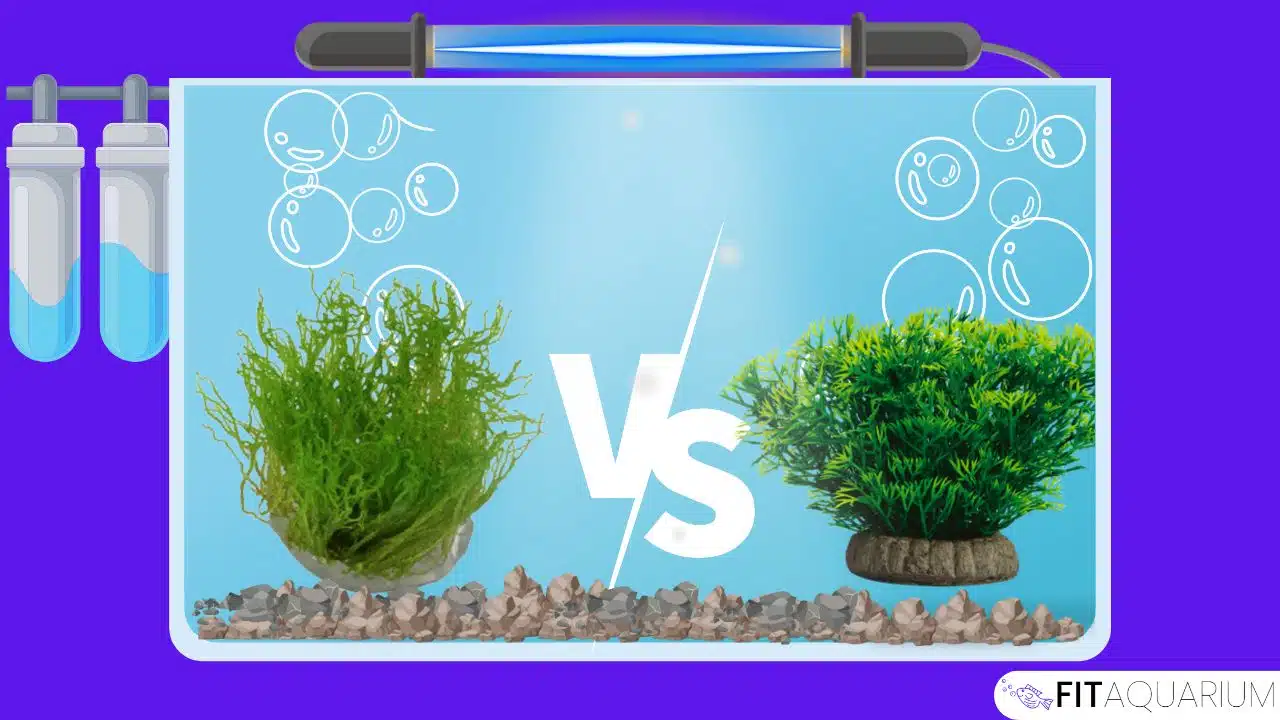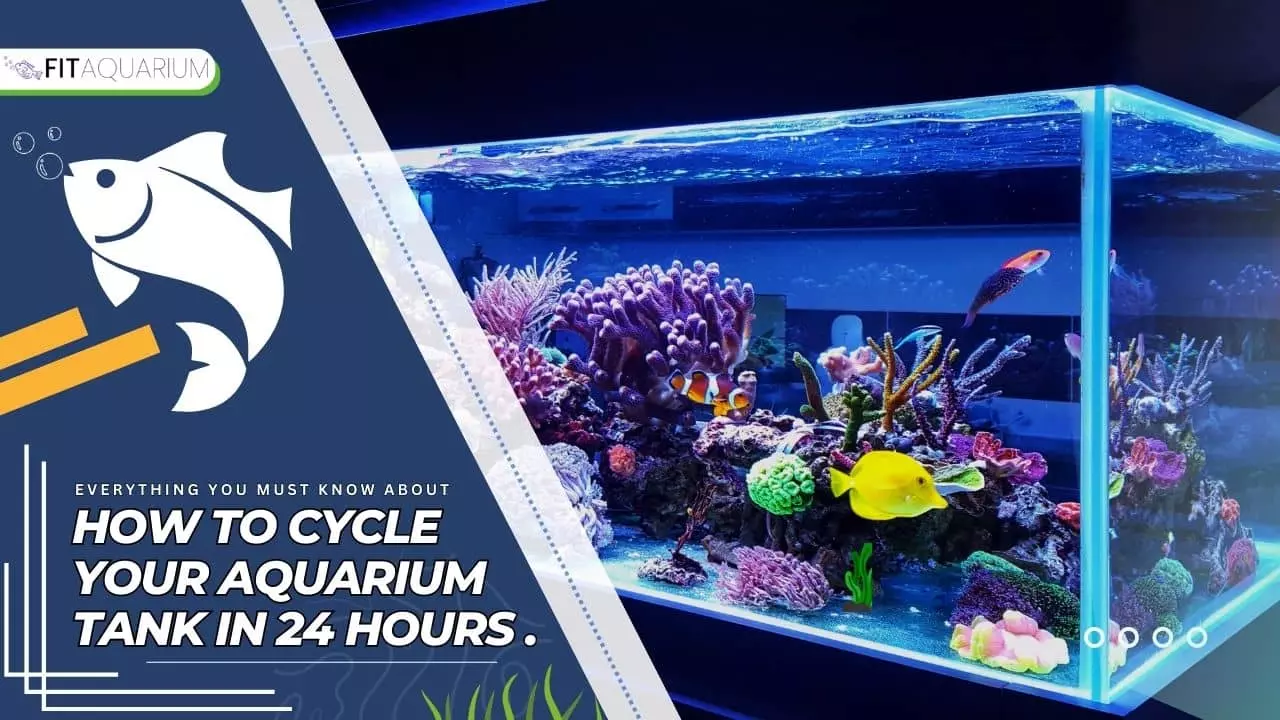Java Moss is a well popular aquatic moss that has won the hearts of many aquarium keepers all around the world. Because of its tremendous benefits including wide availability, low cost, and stunning appearance, it has become a popular choice for both newbies and seasoned aquascapers.
However, despite its popularity, some people struggle to successfully cultivate and grow Java moss in their aquatic environments due to a lack of understanding about growing Java moss and its care requirements.
One of the most important questions that arise when growing Java moss is how fast does java moss grow. There are several key factors that can affect its growth and health, such as light, water, and nutrients.
In this article, we will explore everything you need to know about growing java moss, including its average growth rate, the factors that affect its slow growth rate, and basic care requirements. So, let’s dive into this article to gain valuable insights into cultivating healthy and thriving Java moss in your aquatic environment.
Table of Contents
What is Java Moss?
Java moss is a popular aquarium plant that belongs to the Hypnaceae family. It is native to Southeast Asia, particularly in Java, where it gets its name from.
This aquarium moss has become a beloved plant among aquarists and aquarium hobbyists due to its stunning appearance, versatility, and ease of care. It has unique features that make it stand out from other aquatic plants, including its soft, lush, and bright green appearance, making it ideal for creating an underwater forest or adding a natural touch to any aquarium.
Furthermore, Java moss is known for its hardiness and ability to thrive in various water conditions, making it an excellent choice for both beginners and experienced aquarists. In addition, this aquatic creature is also used for other purposes, such as landscaping, terrariums, and moss walls.
Importance of understanding Java Moss growth rate
Understanding the growth rate of Java moss is essential for any aquarium enthusiast looking to cultivate a beautiful and thriving aquatic environment.
Knowing the rate at which moss grows, can help aquarists determine how much moss they need to plant, how frequently they need to trim it, and what conditions are necessary for optimal growth.
Additionally, understanding the pace to grow moss can help aquarists prevent the overgrowth of moss, which can lead to the depletion of nutrients and the buildup of harmful algae in the aquarium.
By comprehending the factors that affect the faster growth of Java moss, aquarists can make informed decisions about their aquarium’s care, including water and lighting conditions, fertilization schedules, and maintenance requirements.
Understanding the new growth of aquatic mosses also allows aquarists to plan and execute aquascaping designs more effectively, incorporating moss into the overall aesthetic of the aquarium.
Overall, a thorough understanding of aquarium moss growth pace is essential for any aquarium enthusiast looking to create a beautiful and healthy freshwater moss carpet.
How does Java Moss grow?
Java moss is a hardy and adaptable aquarium plant that can grow in a wide range of conditions. The moss is spread by a process known as vegetative propagation, meaning that new plants grow from the existing ones.
Java moss can grow both submerged and emerged, and it can attach itself to rock, driftwood, and other surfaces even aquarium walls or aquarium substrates using its small root-like structures called rhizoids.
Java moss grows slower, with an average growth rate of around 1 to 1.5 inches per month.
But on comparing with other mosses like flame moss (Taxiphyllum Sp.) or Christmas moss (Vesicularia montagnei), it is found that java moss grows faster than these aquatic mosses.
NOTE: Its growth rate can be influenced by a range of factors, including light intensity, water quality, and nutrients.
Java moss requires moderate to high levels of light for ideal growth, and it prefers slightly acidic to neutral water conditions.
In addition, Java moss can benefit from the regular addition of fertilizers containing essential nutrients such as nitrogen, phosphorus, and potassium.
How Fast Does Java Moss Grow?
Are you curious about just how fast does Java moss grow? Java moss is a beloved moss that adds a lush and vibrant green look to your freshwater aquariums. Its growth rate is a common question among aquarium enthusiasts as it can affect the overall health and appearance of the aquarium.
In this article, we will explore the average growth rate of Java moss, factors that affect its growth, and tips for ensuring healthy growth. So, let’s dive in to learn more about this fascinating plant growth!
Growth rate in ideal conditions:
In ideal conditions, Java moss can grow relatively quickly. With proper lighting, water parameters, and nutrient levels, it can grow up to 1-1.5 inches per month.
It’s important to note that the growth rate can vary depending on the specific conditions in your aquarium. It’s essential to maintain a consistent and stable environment for Java Moss to thrive and achieve its maximum growth potential.
Growth Rate in Poor Conditions:
How fast does Java moss grow in less than ideal conditions, such as low light or limited nutrient availability, the growth rate of Java moss will typically be slower.
Additionally, if the water parameters are not within the ideal range, such as if the temperature is too high or too low, the growth rate may also be affected.
In some cases, the Java moss may even begin to die off if the conditions are extremely unfavorable.
Factors Affecting Java Moss Growing Rate:
There are many factors that influence the growth rate of Java moss in your aquatic environment. From lighting and water parameters to nutrients and water temperature, java moss could be affected. Learn how to grow java moss for a lush and vibrant aquascape.
![How Fast Does Java Moss Grow? [4 Tips To Boost Growth] Factors affecting java moss growth](https://fitaquarium.com/wp-content/uploads/2023/04/Factors-affecting-Java-Moss-Growth.webp)
Light:
Light is an essential factor that influences the growth and health of plants, including Java mosses. Without adequate light, plants cannot perform photosynthesis, a process that converts light energy into chemical energy to support Java moss to grow.
In the case of Java moss, low light can result in a very slow growth rate, weak and spindly stems, and the accumulation of algae or other unwanted microorganisms on its surface.
On the other hand, too much light can also harm Java moss by causing photoinhibition, a phenomenon in which excess light energy overwhelms the plant’s photosynthetic machinery, leading to the production of reactive oxygen species that can damage plant cells and tissues.
Therefore, providing Java moss with the right amount and quality of light is crucial to promoting optimal growth and health.
Temperature:
Temperature plays a vital role in the healthy growth of any aquatic plant, including Java Moss.
The ideal temperature range to grow fast java moss is between 70 to 75°F (21 to 24°C). In this temperature range, the plant can thrive and grow steadily. It’s important to note that maintaining a consistent temperature is key for better growth.
Fluctuations in temperature can cause stress to the plant, leading to stunted growth or even death. Therefore, it’s essential to monitor the water temperature in your aquarium regularly and use a heater to keep the temperature within the ideal range for healthy Java moss spread.
Effects of extreme temperatures on Java moss:
While Java moss can tolerate a wide range of temperatures, extreme temperatures can have a negative impact on its growth and overall health.
If the water temperature falls below the ideal range, the growth rate of Java moss will slow down, and the plant may become more susceptible to diseases and pests. If the water temperature exceeds the recommended range, the plant may begin to wilt and lose its vibrant green color.
In extreme cases, exposure to excessively high or low temperatures can lead to the death of the plant. It is crucial to maintain a stable and consistent temperature within the optimal range to ensure the healthy growth and development of Java moss.
Regular monitoring of water temperature and making necessary adjustments can help to maintain a suitable environment for the growth of Java moss.
Nutrients
Nutrients are essential for the growth and development of all plants, and Java moss is no exception. Without adequate nutrients, Java moss may struggle to grow, develop properly, and remain healthy.
Before adding java moss, you should know the necessary nutrients for its growth. These include nitrogen, phosphorus, potassium, iron, and trace elements.
Nitrogen is essential for plant growth, while phosphorus plays a vital role in energy transfer and root development.
Potassium helps with overall plant growth and development and improves disease resistance. Iron is necessary for photosynthesis and chlorophyll production, and trace elements like magnesium, calcium, and sulfur are also important for healthy plant growth.
It must be indicated that over-fertilization can cause algae growth and other problems in the aquarium. This is also crucial to provide the nutrients in appropriate amounts
How to Grow Java Moss Fast
If you want your Java Moss healthy and vibrant, optimizing its growth conditions is essential. Luckily, there are several tips and tricks that you can implement to improve your Java moss growth rate and overall plant health.
![How Fast Does Java Moss Grow? [4 Tips To Boost Growth] Tips to grow java moss fast](https://fitaquarium.com/wp-content/uploads/2023/04/Tips-to-Grow-Java-Moss-Fast.webp)
1. Provide Adequate Lighting:
Java moss requires moderate to high levels of light to photosynthesize and grow. It’s best to place the plant in a well-lit area of your aquarium, and you may need to supplement it with artificial lighting if natural light is insufficient.
2. Maintain Proper Water Parameters:
Java moss thrives in a stable aquatic environment with soft acidic water with a pH range of 5.0 to 8.0 and a temperature between 70°F and 75°F. Regular water changes, filtration, and monitoring of water parameters can help create an ideal environment for your plant.
3. Supplement with Nutrients:
This aqua moss requires a steady supply of nutrients to support growth, including nitrogen, phosphorus, and potassium. You can provide these nutrients through fish waste, fertilizers, or specialized aquatic plant supplements to have a lush java moss carpet.
4. Avoid Overcrowding of Other Plants:
Java moss grows fast, becomes overcrowded and begins to deteriorate if it doesn’t have enough space to grow. Regular pruning and thinning can help maintain healthy growth and prevent overcrowding.
Common Issues with Java Moss Plant Growth:
While this triangular moss is generally easy to care for, aquarists may encounter a few common issues when attempting to cultivate it.
![How Fast Does Java Moss Grow? [4 Tips To Boost Growth] Common issues with java moss growth](https://fitaquarium.com/wp-content/uploads/2023/04/Common-Issues-with-Java-Moss-Growth.webp)
Java Moss dying:
One common issue faced in planting Java moss is the development of brown patches on the moss. This is often caused by inadequate lighting, high levels of nutrients or poor water parameters.
To fix this problem, ensure that the plant receives adequate lighting and that the water parameters are in the appropriate range.
You may also consider removing the affected portions of the plant and improving the water circulation.
Turning Yellow:
Another problem that can occur with this moss is the yellowing of its leaves. This can be caused by inadequate lighting or a lack of nutrients.
To prevent this, ensure that the plant is receiving sufficient light and that you are providing it with the necessary nutrients.
Java Moss Plant Floating:
This moss can sometimes detach from the surface and start to float in the aquarium. This can occur due to poor water circulation or changes in water conditions.
To avoid this, ensure that the plant is properly anchored and that there is adequate water circulation.
Other Common Issues:
Other common problems associated with growing Java moss include algae growth, damage from snails, and improper pruning.
To address these issues, ensure that you are providing the plant with appropriate care, including regular pruning and monitoring for any signs of damage or pest infestation.
Conclusion:
In conclusion, Java moss is a beautiful and versatile aquatic plant that is popular among aquarium enthusiasts. Its growth rate is relatively slow but can be optimized by providing the ideal conditions, such as adequate lighting, water quality, and nutrients.
It is also important to be aware of common problems that may arise during cultivation, such as brown moss, yellowing, and floating.
By taking the necessary steps to optimize growth and addressing any issues promptly, it is possible to cultivate healthy and thriving Java moss in your aquatic environment. Remember to always monitor and adjust as needed to ensure the best possible results.
Frequently Asked Questions
Here are some of the burning questions about the topic “How fast does Java Moss grow?”
![How Fast Does Java Moss Grow? [4 Tips To Boost Growth] Faq's about java moss growth](https://fitaquarium.com/wp-content/uploads/2023/04/FAQs-about-Java-Moss-Growth.webp)
-
How Can I Make Java Moss Grow Faster?
The growth of Java moss is affected by a number of factors. However, the following are some of the measures you can take to increase Java Moss growth.
I. Providing Adequate lighting
II. maintaining proper water parameters
III. supplementing with nutrients
IV. Avoid overcrowding of aquatic creatures. -
Does Java Moss grow faster with CO2?
Java Moss does not require CO2 injection necessarily. It is a hardy plant that can grow well without any extra carbon dioxide supplements. However, little aid of CO2 can obviously boost its growth pace.

![How Fast Does Java Moss Grow? [4 Tips To Boost Growth] How fast does java moss grow?](https://fitaquarium.com/wp-content/uploads/2023/04/How-Fast-Does-Java-Moss-Grow.webp)



